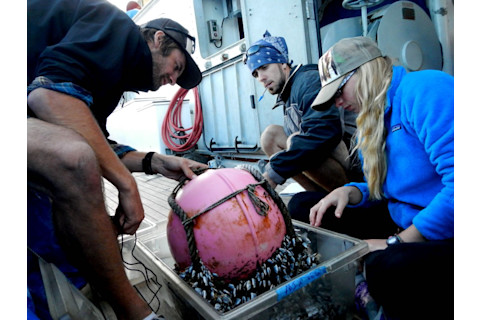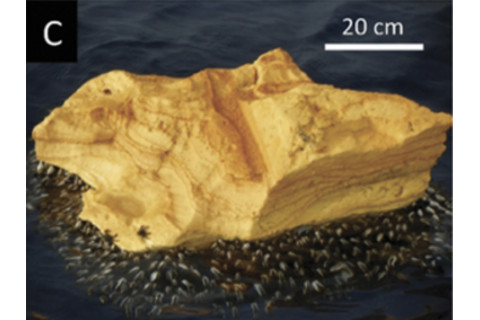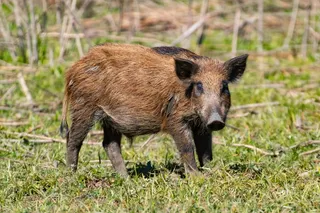
If you wanted to travel from Japan to California, you could do worse than to hitch a ride on a barnacle-covered buoy. Or maybe a barnacle-covered refrigerator or chunk of foam. Barnacles are turning all kinds of ocean trash into cozy habitats for animals at sea. They might even help some of those animals reach distant shores and become dangerous invasive species. Flora and fauna have always sailed the sea on rafts such as pieces of wood or pumice, or matted plants. Without flotation devices, some species could never have reached places like the Hawaiian islands. But natural rafts have a limited lifespan before they biodegrade. Plastic objects made by humans, on the other hand, can survive in the ocean for ages. "Plastics littered in our world's oceans provide an unprecedented opportunity for rafting organisms," says University of Florida biologist Mike Gil. Plastic ocean trash is increasing all the time, and it doesn't break down like natural materials do. Potentially, this means an ordinary piece of garbage could turn a seafaring species into a world traveler. Plastic debris is often too smooth for wildlife to live on. But gooseneck barnacles are an exception. These crustaceans are experts at gluing themselves to smooth, hard surfaces—natural or artificial—and making a home. Gil and his colleagues traveled by boat from California to Hawaii, sampling plastic debris in the ocean as they went. Whenever they could haul a piece of trash aboard, they examined it for barnacles, as well as other forms of life. The researchers found a lot of smooth debris. "Think buoys, drinking bottles, toy balls, pieces of siding," Gil says. They judged that much of it had been swept off the coast of Japan in the 2011 tsunami. They found a refrigerator holding food with Japanese packaging, for example, and a capsized Japanese boat. Despite the inhospitable nature of these smooth pieces of debris, they teemed with life. The researchers found clinging masses of gooseneck barnacles all over the place.

Barnacles cling to a chunk of foam. The barnacles are "like trees in a rainforest," Gil says. They provide shelter from predators and the elements for other species. By growing on the plastic trash, barnacles create a new ecosystem. And in these trash ecosystems, the researchers found many other species. Onboard the boat, they used their hands, knives, spatulas and paint scrapers to pry life forms off the rafts and count them. The more barnacles there were, the more other animals they found living on the trash. Some of the species living among the barnacles were coastal animals. Some had never been seen on an ocean raft before. And some were very far from home. An Asian crab species turned up on a piece of debris near San Diego, Gil says. One raft held species from opposite sides of the Pacific at the same time. The study demonstrates that "plastic garbage in the ocean can transport species from coast to coast," Gil says. "If these species are foreign to the coasts they are transported to, they could become invasive." That means they could wreak havoc on the ecosystems and economies of the places they land. As plastic debris continues to fill the ocean, this threat will only get worse. Gil points out that even if humans do their best to keep trash on dry ground, natural disasters like the Japanese tsunami can override our efforts. Reducing the amount of plastic we make in the first place may be the only way to keep joyriding ocean animals from becoming globetrotting nightmares. Images: Top by Marina Garland (Tyson Bottenus, Mike Gil, and Laura Hansen examine species rafting on a piece of plastic debris). Bottom, Patricia Keoughan.
Gil, M., & Pfaller, J. (2016). Oceanic barnacles act as foundation species on plastic debris: implications for marine dispersal Scientific Reports, 6 DOI: 10.1038/srep19987













